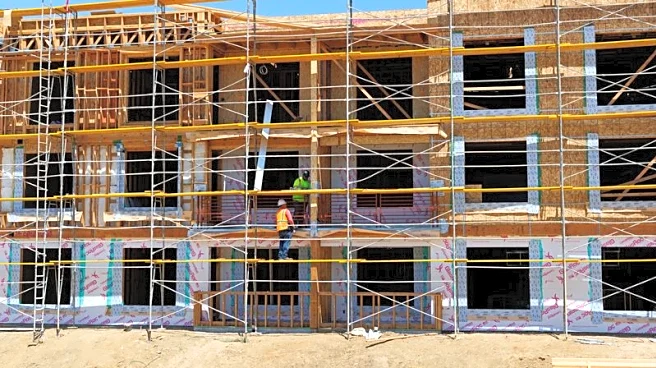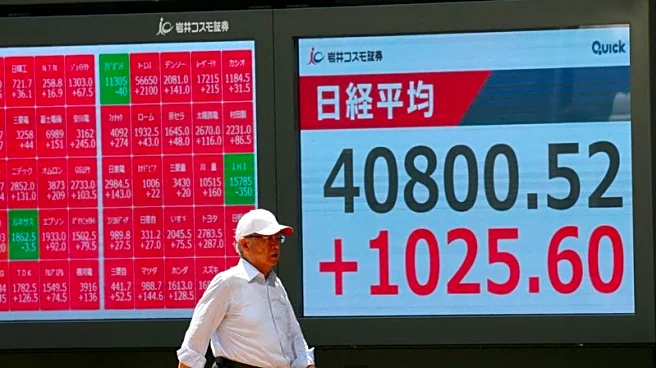What's Happening?
The U.S. construction spending experienced a decline in July, as reported by the Commerce Department's Census Bureau. The spending fell by 0.1%, following a 0.4% drop in June, aligning with economists' expectations. The year-over-year spending decreased by 2.8%. Private construction projects saw a reduction of 0.2%, while residential construction investment slightly increased by 0.1%. Despite easing mortgage rates, they remain elevated, impacting the housing market. The inventory of completed new homes for sale reached a 16-year high in July, and outlays on multi-family housing units decreased by 0.4%. Investment in private nonresidential structures also fell by 0.5%. Public construction spending, however, rose by 0.3%, with federal government projects increasing by 3.2%.
Why It's Important?
The decline in construction spending highlights ongoing challenges in the housing market, primarily driven by high mortgage rates. This situation affects various stakeholders, including homebuyers, construction companies, and the broader economy. The elevated mortgage rates continue to constrain home sales, despite expectations of interest rate cuts by the Federal Reserve. The slowdown in residential investment, coupled with a high inventory of new homes, suggests potential difficulties for the housing sector. Public construction spending increases may provide some relief, but the overall trend indicates a cautious outlook for the construction industry.
What's Next?
The construction industry may face further challenges if mortgage rates remain high, potentially leading to continued declines in residential investment. Stakeholders, including policymakers and construction firms, may need to explore strategies to mitigate the impact of high rates and support the housing market. The Federal Reserve's decisions on interest rates could play a crucial role in shaping the future of construction spending. Additionally, the industry might focus on public construction projects to offset declines in private sector spending.












